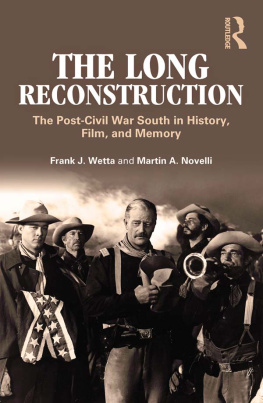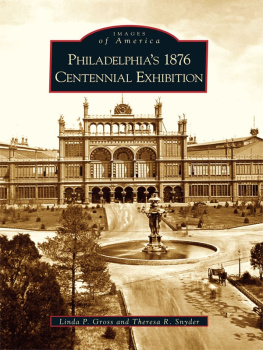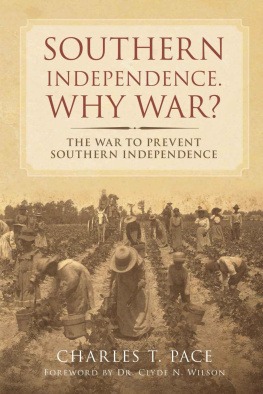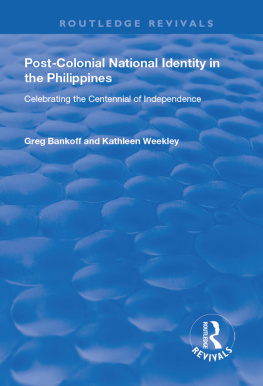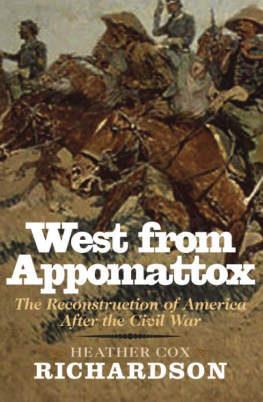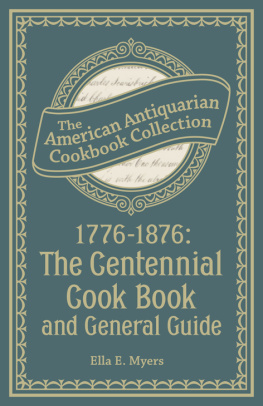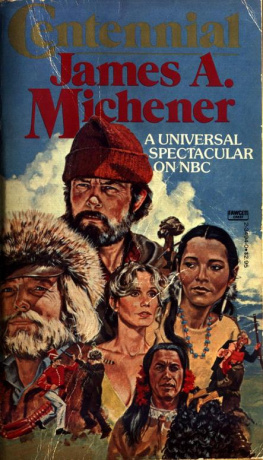CONTESTING COMMEMORATION
CONFLICTING WORLDS
New Dimensions of the American Civil War
T. Michael Parrish, Series Editor
CONTESTING COMMEMORATION
THE 1876 CENTENNIAL, INDEPENDENCE DAY,
AND THE RECONSTRUCTION-ERA SOUTH
JACK NOE
Louisiana State University Press Baton Rouge
Published by Louisiana State University Press
lsupress.org
Copyright 2021 by Louisiana State University Press
All rights reserved. Except in the case of brief quotations used in articles or reviews, no part of this publication may be reproduced or transmitted in any format or by any means without written permission of Louisiana State University Press.
Chapter 4, The Centennial and the Politics of Representation, is derived, in part, from an aritcle published in Southwestern Historical Quarterly in October 2016 (CXX, 2), avialable online at www.muse.jhu.edu.
Chapter 5, White Southerners and African Americans at the 1876 Centennial, is derived, in part, from an article published in American Nineteenth Century History in September 2016 (17:3), avialable online at wwww.tandfonline.com.
Designer: Barbara Neely Bourgoyne
Typeface: Whitman
Jacket photograph: The Statue of Libertys torch on display at the 1876 Centennial Exhibition in Philadelphia. Courtesy Library of Congress.
Library of Congress Cataloging-in-Publication Data
Names: Noe, Jack, author.
Title: Contesting commemoration : the 1876 centennial, Independence Day, and the Reconstruction-era South / Jack Noe.
Other titles: Conflicting worlds.
Description: Baton Rouge : Louisiana State University Press, [2021] | Series: Conflicting worlds : new dimensions of the American Civil War | Includes bibliographical references and index.
Identifiers: LCCN 2021002212 (print) | LCCN 2021002213 (ebook) | ISBN 978-0-8071-7558-3 (cloth) | ISBN 978-0-8071-7616-0 (pdf) | ISBN 978-0-8071-7617-7 (epub)
Subjects: LCSH: Fourth of July celebrationsSouthern StatesHistory19th century. | NationalismSouthern StatesHistory19th century. | Southern StatesHistory18651877. | Southern StatesPolitics and government18651950. | Southern StatesSocial conditions18651945. | United StatesCentennial celebrations, etc.
Classification: LCC F216 .N64 2021 (print) | LCC F216 (ebook) | DDC 975/.04dc23
LC record available at https://lccn.loc.gov/2021002212
LC ebook record available at https://lccn.loc.gov/2021002213
Contents
Acknowledgments
This book started life as a research project at the University of Leeds and owes much to my steadfast supervisor there, Simon Hall.
Other friends and colleagues at Leeds offered support and encouragement along the way: many thanks to Gina Denton, Kate Dossett, Andrew Lunt, Lauren Mottle, Sabina Peck, Simone Pelizza, Giovanni Pozzetti, Claudia Rogers, Mark Walmsley, and Jonathan Wright. Thanks are also due to historians Alwyn Barr, Susanna Gold, Carl Moneyhon, and Patrick Williams for providing useful advice during the projects early phases. Chris Hayashida-Knight helped make a short residence at Penn State fruitful and shared a useful conference paper with me.
At Queen Mary, University of London, Noam Maggor, Daniel Peart, Joanna Cohen, Matthew Griffin, Connie Thomas, and David Tiedemann provided some really useful feedback on chapter drafts and made later revisions easier.
Im grateful to Louisiana State University Press for publishing the book, in particular editor in chief Rand Dotson, Conflicting Worlds series editor Michael Parrish, and senior editor Neal Novak. Copyeditor Elizabeth Gratch has done a thorough and thoroughly marvelous job: thank you. Id also like to thank my anonymous peer reviewer for their cogent, insightful, and encouraging comments.
Ron Peterson, Kat Marran, and Janet Wilson read chapter drafts and provided valuable feedback: thanks again! Beatrice Ballarini offered some timely technical advicegrazie.
My thanks and appreciation to all of these people and to Jack T. and Gail Noe, Jeremy Noe, Jacopo Pili, Howard Lewis Russell, Pablo Tempesta, and Martin White.
Chapter 4 is derived, in part, from an article published in the Southwest Historical Quarterly, October 2016. Chapter 5 is derived, in part, from an article published in American Nineteenth Century History, September 2016.
CONTESTING COMMEMORATION
Introduction
Between May and November 1876, a grand worlds fair, Americas first, was held in Philadelphias Fairmount Park. The International Exhibition of Arts Manufactures and Products of the Soil and Minemore commonly known as the Centennial Exhibition, or simply the Centennialattracted more than ten million visitors in the six months it was open, one-fifth of the nations population. It introduced Americans to both popcorn and the ice cream sundae, and Alexander Graham Bell was on hand to provide curious crowds with demonstrations of his new invention, the telephone. The Centennial was more than mere spectacle, though. Held just eleven years after the end of the Civil War and commemorating one hundred years of national existence, the exhibition, along with local events held all over the country in that anniversary year, presented an opportunity like no other for whites, Blacks, northerners, and southerners to reflect on and engage with ideas about their identity as Americans. Running in tandem with a bitterly contested presidential election that would decide the future of Reconstruction and the nation, it served as a performative expression of postCivil War American nationalism as well as a rhetorical proxy utilized by the white South to reject any immediate or unconditional re-embrace of that nationalism. This study analyses postCivil War reunion and reconciliation, using white southern reaction to and involvement with these celebrations as a lens through which to explore the economic, social, and political aspects of reunification and the tensions that lay behind the development of a postCivil War American identity. The discussion of white southerners will, throughout, be countered with a parallel narrative focused on African Americans, another demographic whose world was upended by the Civil War. The book examines, in a comparative light, African Americans engagement with national identity and their use of commemoration to stake a claim to full citizenship and American identity in the postCivil War era.
There has been valuable work in recent years on the postCivil War South and the nettlesome question of sectional reunion and reconciliation. Historians such as Gregory Downs, Anne Sarah Rubin, and Richard Zuczek have demonstrated that white guerrilla-style terrorism, a defiant and resistant white public mood and the fact of federal military control of the South, make it plausible to argue that a state of quasi-war persisted throughout the period of Reconstruction. Though it was a delicate and politically volatile process, the end of Reconstruction saw reunion accomplished with the states of the former Confederacy once again operationally part of the Union. David Blights influential work has argued that sectional reunion was achieved at the expense of African Americans, with the wars emancipatory aspects largely overlooked in favor of a reconciliationist view that accommodated both northern and southern whites. This works study of freed peoples use of Revolutionary memory and commemoration to claim their status as full citizens builds on Blights treatment of African American focus on preserving memory of the Civil War as an emancipationist struggle. Meanwhile, Caroline Janney has stressed the gaps between political reunion and genuine reconciliation, skillfully highlighting sectional antagonism and alienation that persisted long into the twentieth century. Recognizing that reconciliation is a different, trickier question altogether, this book zeroes in on the lacunae between reunion and reconciliation in that brief, albeit key, time frame in which reunion was achieved.





